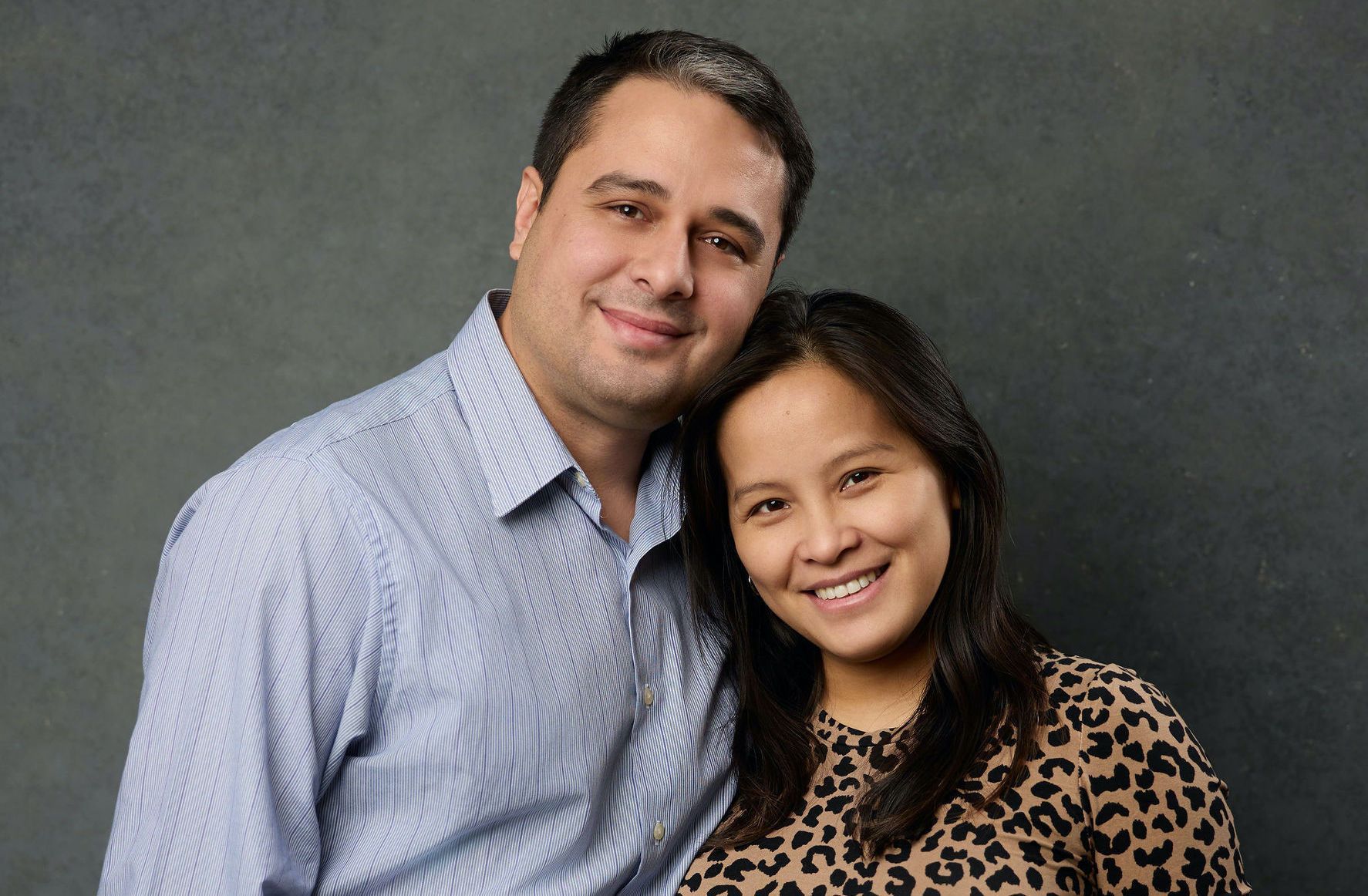Immigration Topic: Philippine Fiance or Spouse living outside of the Philippines and how to Immigrate to the US

Philippine Citizens frequently work abroad. The common term or title is OFW or Overseas Filipino Worker. Filipinos frequently find employment in the following countries:
- Saudi Arabia (23% of all OFWs)
- United Arab Emirates (13% of all OFWs)
- Kuwait (7% of all OFWs)
- Hong Kong (6% of all OFWs)
- Qatar (5% of all OFWs)
- Singapore (5% of all OFWs)
- Japan (3% of all OFWs)
- South Korea (1% of all OFWs)
Nearly 1.83 million OFWs are working around the world, according to the PSA, Philippine Statistics Authority. The tendency to work in the Middle East or Asia is common, and since the Philippine Citizen usually knows English, there is a common trend to meet and date English Speaking individuals while abroad, such as US Citizen traveling or working abroad in those foreign countries.
This article could be titled:
- How to Immigrate my Filipina Wife in Saudi Arabia to the US
- How to Immigrate my Filipina Wife in United Arab Emirates to the US
- How to Immigrate my Filipina Wife in Kuwait to the US
At least, based on percentages. However, this article will cover common questions, required documents, and timelines for both a Fiance and Spouse of a US Citizen.
What is better: K1 Visa or CR1/IR1 Visa
The K1 visa is for Fiances, whereas the CR1 and IR1 are for spouses. To the question of which is better, the CR1/IR1 is:
- cheaper
- 2x - 3x quicker
- prioritized at the Embassy or Consulate
- instantly allows employment, international travel, driver's license, and social security card
The purpose of the K1 is to "test the relationship in the US," as most recipients cannot enter the US on a tourist visa, and the US Citizen cannot travel abroad to try the relationship "in-person" overseas.
A little more information can be seen here:
Is it hard to get married abroad?
No, every embassy generally has guidance on what is required to marry overseas. For instance:
The US Embassy in Saudi Arabia states: https://sa.usembassy.gov/notarial-services-offered-in-saudi-arabia/
The US Embassy in South Korea states: https://kr.usembassy.gov/services-getting-married-in-korea/
The US Embassy in Japan states: https://jp.usembassy.gov/services/marriage/marriage-in-japan/
Additionally, a Utah Marriage that occurs with both spouses overseas may be simpler in providing a "US-Based Marriage Certificate." More information can be seen here: https://www.fickeymartinezlaw.com/immigration/virtual-utah-marriage-alternative-to-a-proxy-marriage-for-immigration-purposes
Can my Philippine Fiance or Spouse acquire Philippine Documents while abroad?
YES, 100% YES.
Since so many filipinos reside abroad as OFWs, the local Philippine Embassy can assist and provide guidance in acquiring common documents, such as:
- PSA Birth Certificate
- PSA CENOMAR
- PSA Marriage Certificate and/or Advisory of Marriage
- NBI Clearance
The PSA Birth Certificate can be ordered and mailed internationally. More information can be seen here: https://www.fickeymartinezlaw.com/immigration/psa-philippine-birth-certificate
The NBI Clearance is similar to a Police Certificate/FBI Background Check. The Philippine Embassy can assist with fingerprinting and can provide more information. Filipinos in the Philippines normally proceed to any NBI Clearance Outlet. For a complete list of NBI outlets, please visit this link: https://www.nbiclearance.org/how-to-apply-for-nbi-clearance/
Where can I get information regarding the Non-Philippine Police Certificate?
The NVC provides guidance for every country someone has resided in for more than 6 months after the age of 16.
The database can be found here: https://travel.state.gov/content/travel/en/us-visas/Visa-Reciprocity-and-Civil-Documents-by-Country.html
Where can I find Embassy or Consulate instructions for the Visa?
Our office has compiled Instruction links for nearly every US Embassy or Consulate, based on world region:
Bahrain, Egypt, Iraq, Jordan, Kuwait, Lebanon, Libya, Mauritania, Morocco, Oman, Palestine, Qatar, Saudi Arabia, Sudan, Syrian Arab Republic, Tunisia, United Arab Emirates, and Yemen:
China, Hong Kong, Japan, Macau, Mongolia, South Korea, and Taiwan:
Bangladesh, Bhutan, Brunei, Cambodia, India, Indonesia, Laos, Malasia, Myanmar/Burma, Nepal, Philippines, Singapore, Sri Lanka, Thailand, Timor-Leste, and Vietnam:
Iran, Kazakhstan, Kyrgyzstan, Pakistan, Tajikistan, Turkmenistan, and Uzbekistan:
My Fiance or Spouse was denied a Tourist Visa. Is that going to be a problem?
No, as long as no fraud occurred.
A denial due to insufficient ties to the home country is common. 1 out of every 100 Philippine Citizens is an OFW. 1 out of every 100 US Citizens is Filipino-american.
Philippine Citizens have a high percentage of tourist visa denial due to the fact that they are the 4th largest immigrant population in the US. 1 out of every 7 asian immigrant in the US is Filipino.
What happens if a Philippine Wife is pregnant with a US Citizen’s Child?
Many believe the baby or newborn would need a visa to enter the US. However, that is normally not the case.
Any children of a US Citizen may already be US Citizen at time of birth and should use a US Passport for travel.
The Consular Report of Birth Abroad (CRBA) Process can be found at any local US Embassy or Consulate. The process provides the US Citizen child:
- US Passport
- US Social Security Card
- proof of US Citizenship in the form of a CRBA Certificate that will never expire
What are the Steps of a K1 Visa Process?
Step 1: I-129F Petition filed with USCIS
Step 2: DS-160 K-1 Fiancee Visa application filed with the US Embassy or Consulate that handles Immigrant Visas, which allows the fiancee to enter the US
Step 3: I-485 Adjustment of Status filing with USCIS to receive a Green Card
What are the Steps of a CR1/IR1 Visa Process?
The IR-1 / CR-1 Spousal Immigrant Visa is the visa that would allow a Filipino spouse to immigrate to the US.
The process has 2 basic steps:
Step 1: Petition
Step 2: Visa Application
However, it is better to understand through the following breakdown:
Part 1 – Petition to Recognize the Relationship – Submit the I-130 Electronically
Part 2 – Waiting Period – I-130 Pending awaiting a USCIS Officer to review the filing and supporting documents
Part 3 – NVC Processing – Visa fees are paid online, DS-260 completed, and supporting documents uploaded.
Part 4 – Consulate Interview – NVC provides Interview day and time, Consulate Account Registered, Medical Performed, Documents Organized, and Interview Attended.
Part 5 – Arrive in the US – Pay Immigrant Fee, Fly to the United States, Apply/Receive US Social Security Card, and Receive Green Card in the mail within 3-4 months after entry.
What is the Difference Between CR1 and IR1?
In Short, the Length of the Marriage determines which visa is received.
For marriages under 2 years at time of visa interview, a CR-1 is provided. For marriages over 2 years at time of visa interview, an IR-1 is provided.
CR-1 creates a 2-year Green Card conditioned on the Marriage continuing for another 2 more years and the marriage being evaluated years later in an I-751 filing.
IR-1 creates a 10-year Green Card without any conditions.
When can my Spouse become a US Citizen?
Usually, a spouse must hold the Green Card (aka Lawful Permanent Residence Status) for 3 years before they can qualify for US Citizenship.
A Philippine spouse CANNOT just apply for a US Passport after marrying a US Citizen. (Common question from US Citizens)
US Citizen is an Active Duty Service Member or DOD Contractor, can the spouse come to the US expedited?
Generally, no!
If the Service member has been abroad overseas for 3 years, USCIS would expect the marriage to occur sometime BEFORE a few weeks or months from receiving orders to return to a US Base.
If you marry a few days or weeks prior to leaving, the Philippine Spouse is usually required to either remain in that country (if they have a valid employment visa) or return to the Philippines (if they converted to a SOFA Visa).
DOD Contractor can be abroad for 5-10 years, and contracts can always be renewed. The Philippine Spouse will normally need to go through the CR-1/IR-1 Spousal process, and then may consider the following option: https://www.fickeymartinezlaw.com/immigration/ine-319b-naturalization-option-spouses-of-u-s-citizens-employed-or-stationed-abroad
Have a Quick Question? or, want a Consultation?
Our Experience:
The Immigration Attorney first experienced the immigration process when he married his wife, who is from the Philippines, in 2014. The Attorney's wife was a J-1 Public School Teacher.
Our immigration law firm began in 2015, initially heavily assisting Filipinos in North Carolina, USA. Our office assisted with a process back then called "red ribboning," which was a requirement needed by the Philippine Embassy in Washington D.C. (and by any Philippine Embassy or Consulate around the word) back then, before the Philippines joined the Hague Apostille Convention. Our office was 1 of about 10 in the eastern United States that assisted in this fashion.
After nearly a decade of service, our office has helped hundreds of Filipino Families (might be in the thousands now, but hundreds has a nice ring to it), both in the United States on a visa, in other Countries (with the Filipino/a on a work visa abroad, usually in Saudi Arabia or Japan), and also in the Philippines.
Here is a more thorough guidance on Immigrating a Philippine Spouse: https://www.fickeymartinezlaw.com/immigration/consular-processing/us-citizens-guide-to-marrying-in-the-philippines-and-immigrating-a-philippine-filipina-spouse-to-the-united-states
Here is a more thorough guidance on Immigrating a Philippine Fiance: https://www.fickeymartinezlaw.com/immigration/k-1-fiance-visa/us-citizens-guide-to-the-fiance-visa-process-in-manila-philippines
If you require assistance with the Philippine Fiance or Spousal Visa process, please consider contacting our office to set up a consultation with our Immigration Attorney.
Disclaimer: This Blog is made available by the lawyer or law firm publisher for educational purposes only as well as to give you general information and a general understanding of the law, not to provide specific legal advice. By using this blog site you understand that there is no attorney-client relationship between you and the Blog/Web Site publisher. The Blog should not be used as a substitute for competent legal advice from a licensed professional attorney in your state.












